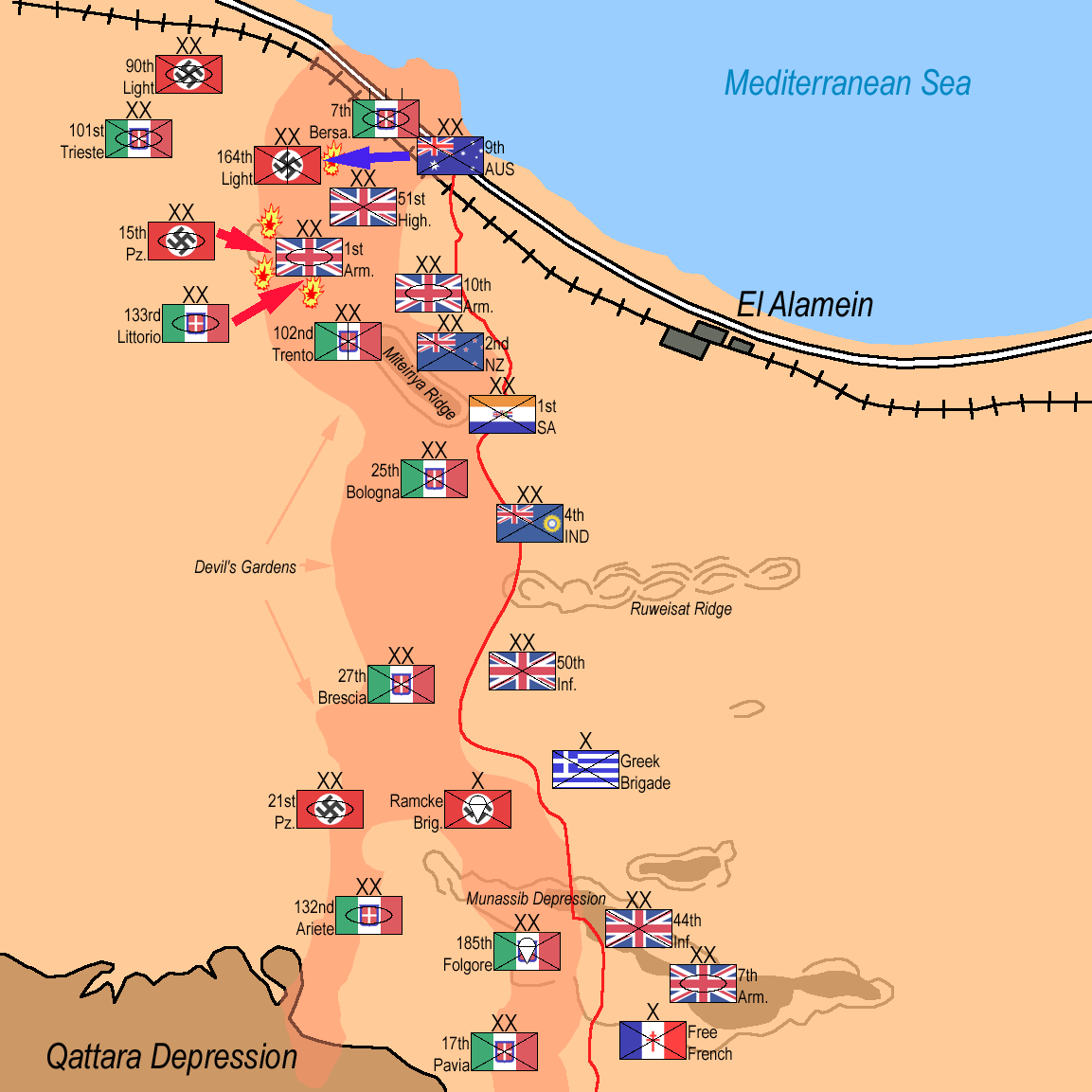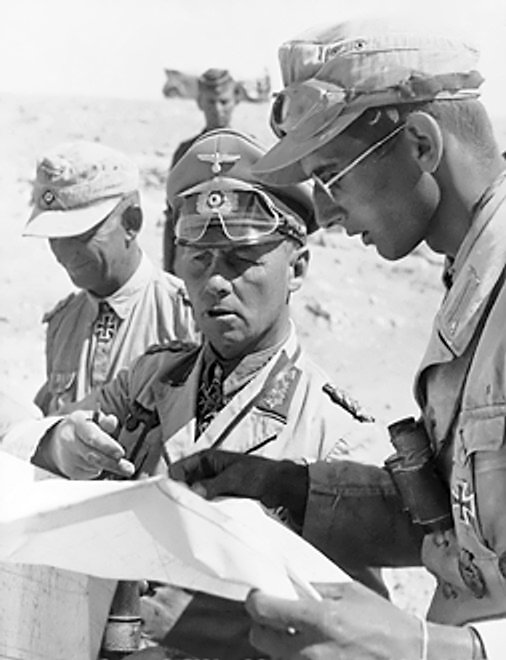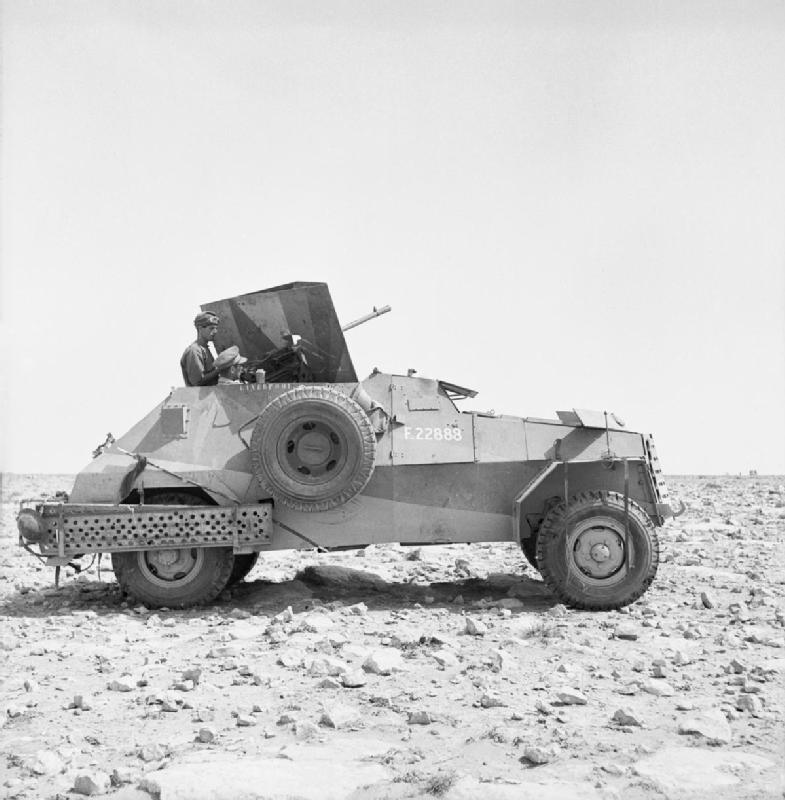|
15th Panzer Division (Wehrmacht)
The 15th Panzer Division (german: 15. Panzer-Division) was an armoured division in the German Army, the Wehrmacht, during World War II, established in 1940. The division, formed from the 33rd Infantry Division, fought exclusively in North Africa from 1941 to 1943, eventually ceasing to exist after surrendering in Tunisia in May 1943. History The 33rd Infantry Division, forerunner of the 15th Panzer Division, was formed in April 1936 and part of the German defences in the Saarland during the early month of the war. It participated in the invasion of France and remained there after the French surrender as an occupation force. It returned to Germany in September 1940 to be converted to a tank division. The division was transported to Libya in April 1941, joining General Erwin Rommel's ''Deutsches Afrikakorps'' (DAK) as one of two German tank divisions in North Africa at the time, the other having been the 21st Panzer Division. However, the Royal Navy intercepted and sank the s ... [...More Info...] [...Related Items...] OR: [Wikipedia] [Google] [Baidu] |
German Army (Wehrmacht)
The German Army (, "army") is the land component of the armed forces of Federal Republic of Germany, Germany. The present-day German Army was founded in 1955 as part of the newly formed West German ''Bundeswehr'' together with the German Navy, ''Marine'' (German Navy) and the German Air Force, ''Luftwaffe'' (German Air Force). , the German Army had a strength of 62,766 soldiers. History Overview A German army equipped, organized, and trained following a single doctrine and permanently unified under one command in 1871 during the unification of Germany under the leadership of Prussia. From 1871 to 1919, the title ''German Army (German Empire), Deutsches Heer'' (German Army) was the official name of the German land forces. Following the German defeat in World War I and the end of the German Empire, the main army was dissolved. From 1921 to 1935 the name of the German land forces was the ''Reichswehr, Reichsheer'' (Army of the Empire) and from 1935 to 1945 the name ''German Army (We ... [...More Info...] [...Related Items...] OR: [Wikipedia] [Google] [Baidu] |
Saarland
The Saarland (, ; french: Sarre ) is a state of Germany in the south west of the country. With an area of and population of 990,509 in 2018, it is the smallest German state in area apart from the city-states of Berlin, Bremen, and Hamburg, and the smallest in population apart from Bremen. Saarbrücken is the state capital and largest city; other cities include Neunkirchen and Saarlouis. Saarland is mainly surrounded by the department of Moselle ( Grand Est) in France to the west and south and the neighboring state of Rhineland-Palatinate in Germany to the north and east; it also shares a small border about long with the canton of Remich in Luxembourg to the northwest. Saarland was established in 1920 after World War I as the Territory of the Saar Basin, occupied and governed by France under a League of Nations mandate. The heavily industrialized region was economically valuable, due to the wealth of its coal deposits and location on the border between France and German ... [...More Info...] [...Related Items...] OR: [Wikipedia] [Google] [Baidu] |
El Alamein
El Alamein ( ar, العلمين, translit=al-ʿAlamayn, lit=the two flags, ) is a town in the northern Matrouh Governorate of Egypt. Located on the Arab's Gulf, Mediterranean Sea, it lies west of Alexandria and northwest of Cairo. , it had a population of 7,397 inhabitants. The town is located on the site of the ancient city Antiphrai (). Tourism El Alamein war museum El Alamein has a war museum with artifacts from North African battles. Military cemeteries Germany There are Italian and German military cemeteries on Tel el-Eisa Hill outside the town. The German cemetery is an ossuary, built in the style of a medieval fortress. Italy The Italian cemetery is a mausoleum containing 5,200 tombs. Many tombs bear the soldier's names, with others simply marked IGNOTO, i.e. unknown. Greek There is a Greek cemetery at El Alamein. Commonwealth of Nations There is a Commonwealth war cemetery, built and maintained by the Commonwealth War Graves Commission, with graves of sold ... [...More Info...] [...Related Items...] OR: [Wikipedia] [Google] [Baidu] |
Battle Of Gazala
The Battle of Gazala (near the village of ) was fought during the Western Desert Campaign of the Second World War, west of the port of Tobruk in Libya, from 26 May to 21 June 1942. Axis troops of the ( Erwin Rommel) consisting of German and Italian units fought the British Eighth Army (General Sir Claude Auchinleck, also Commander-in-Chief Middle East) composed mainly of British Commonwealth, Indian and Free French troops. The Axis troops made a decoy attack in the north as the main attack moved round the southern flank of the Gazala position. Unexpected resistance at the south end of the line around the Bir Hakeim box by the Free French garrison, left with a long and vulnerable supply route around the Gazala Line. Rommel retired to a defensive position backing onto Allied minefields (the Cauldron), forming a base in the midst of the British defences. Italian engineers lifted mines from the west side of the minefields to create a supply route through to the Axis side. Ope ... [...More Info...] [...Related Items...] OR: [Wikipedia] [Google] [Baidu] |
Tobruk
Tobruk or Tobruck (; grc, Ἀντίπυργος, ''Antipyrgos''; la, Antipyrgus; it, Tobruch; ar, طبرق, Tubruq ''Ṭubruq''; also transliterated as ''Tobruch'' and ''Tubruk'') is a port city on Libya's eastern Mediterranean coast, near the border with Egypt. It is the capital of the Butnan District (formerly Tobruk District) and has a population of 120,000 (2011 est.)."Tobruk" (history), ''Encyclopædia Britannica'', 2006, Britannica Concise Encyclopedia, ''Concise.Britannica.com'BC-Tobruk. Tobruk was the site of an ancient Greek colony and, later, of a Roman fortress guarding the frontier of Cyrenaica. Over the centuries, Tobruk also served as a waystation along the coastal caravan route. By 1911, Tobruk had become an Italian military post, but during World War II, Allied forces, mainly the Australian 6th Division, took Tobruk on 22 January 1941. The Australian 9th Division ("The Rats of Tobruk") pulled back to Tobruk to avoid encirclement after actions at Er Regima a ... [...More Info...] [...Related Items...] OR: [Wikipedia] [Google] [Baidu] |
Operation Crusader
Operation Crusader (18 November – 30 December 1941) was a military operation of the Western Desert Campaign during the Second World War by the British Eighth Army (United Kingdom), Eighth Army (with Commonwealth, Indian and Allied contingents) against the Axis forces (German and Italian) in North Africa commanded by Erwin Rommel. The operation was intended to bypass Axis defences on the Egyptian–Libyan frontier, defeat the Axis armoured forces and relieve the 1941 Siege of Tobruk. On 18 November 1941, the Eighth Army launched a surprise attack. From 18 to 22 November, the dispersal of British armoured units led to them suffering 530 tank losses and inflicted Axis losses of about 100 tanks. On 23 November, the 5th South African Brigade was destroyed at Sidi Rezegh ( ) but inflicted many German tank casualties. On 24 November Rommel ordered the "dash to the wire" and caused chaos in the British rear echelons but allowed the British armoured forces to recover. On 27 November, t ... [...More Info...] [...Related Items...] OR: [Wikipedia] [Google] [Baidu] |
Operation Battleaxe
Operation Battleaxe (15–17 June 1941) was a British Army offensive during the Second World War to raise the Siege of Tobruk and re-capture eastern Cyrenaica from German and Italian forces. It was the first time during the war that a significant German force fought on the defensive. The British lost over half of their tanks on the first day and only one of three attacks succeeded. The British achieved mixed results on the second day, being pushed back on their western flank and repulsing a big German counter-attack in the centre. On the third day, the British narrowly avoided disaster by withdrawing just ahead of a German encircling movement. The failure of Battleaxe led to the replacement of British General Sir Archibald Wavell, Commander-in-Chief Middle East, by Claude Auchinleck; Wavell took Auchinleck's position as Commander-in-Chief, India. Background /Operation Sunflower In late March 1941, soon after the arrival of the in Tripoli, Libya to reinforce the Italians, t ... [...More Info...] [...Related Items...] OR: [Wikipedia] [Google] [Baidu] |
Operation Brevity
Operation Brevity was a limited offensive conducted in mid-May 1941, during the Western Desert Campaign of the Second World War. Conceived by the commander-in-chief of the British Middle East Command, General Archibald Wavell, Brevity was intended to be a rapid blow against weak Axis front-line forces in the Sollum– Capuzzo–Bardia area of the border between Egypt and Libya. Although the operation got off to a promising start, throwing the Axis high command into confusion, most of its early gains were lost to local counter-attacks, and with German reinforcements being rushed to the front the operation was called off after one day. Egypt had been invaded by Libyan-based Italian forces in September 1940, but by February of the following year a British counter-offensive had advanced well into Libya, destroying the Italian Tenth Army in the process. British attention then shifted to Greece, which was under the threat of Axis invasion. While Allied divisions were being diverte ... [...More Info...] [...Related Items...] OR: [Wikipedia] [Google] [Baidu] |
Royal Navy
The Royal Navy (RN) is the United Kingdom's naval warfare force. Although warships were used by English and Scottish kings from the early medieval period, the first major maritime engagements were fought in the Hundred Years' War against France. The modern Royal Navy traces its origins to the early 16th century; the oldest of the UK's armed services, it is consequently known as the Senior Service. From the middle decades of the 17th century, and through the 18th century, the Royal Navy vied with the Dutch Navy and later with the French Navy for maritime supremacy. From the mid 18th century, it was the world's most powerful navy until the Second World War. The Royal Navy played a key part in establishing and defending the British Empire, and four Imperial fortress colonies and a string of imperial bases and coaling stations secured the Royal Navy's ability to assert naval superiority globally. Owing to this historical prominence, it is common, even among non-Britons, to ref ... [...More Info...] [...Related Items...] OR: [Wikipedia] [Google] [Baidu] |
21st Panzer Division (Wehrmacht)
The 21st Panzer Division was a German armoured division best known for its role in the battles of the North African Campaign from 1941–1943 during World War II when it was one of the two armoured divisions making up the Deutsches Afrikakorps (DAK). 1941–1942 The Italian army group in North Africa was routed by the British Commonwealth Western Desert Force in Operation Compass 9 December 1940 – 9 February 1941 under General Wavell. The German Armed Forces High Command ('' Oberkommando der Wehrmacht'') decided to send a "blocking force" to Libya to support the Italian army, commanded by the future Field Marshal Erwin Rommel. The German blocking force at first was based only on Panzer Regiment 5, which was put together from the second regiment of the 3rd Panzer Division. These elements were organized into the 5th Light Division when they arrived in Africa from 10 February – 12 March 1941. On 2 March 1941, the first 8.8 cm "88" dual purpose anti-aircraft/anti-tank guns ... [...More Info...] [...Related Items...] OR: [Wikipedia] [Google] [Baidu] |
Erwin Rommel
Johannes Erwin Eugen Rommel () (15 November 1891 – 14 October 1944) was a German field marshal during World War II. Popularly known as the Desert Fox (, ), he served in the ''Wehrmacht'' (armed forces) of Nazi Germany, as well as serving in the ''Reichswehr'' of the Weimar Republic, and the army of German Empire, Imperial Germany. Rommel was a highly decorated officer in World War I and was awarded the ''Pour le Mérite'' for his actions on the Italian Front (World War I), Italian Front. In 1937, he published his classic book on military tactics, ''Infantry Attacks'', drawing on his experiences in that war. In World War II, he commanded the 7th Panzer Division (Wehrmacht), 7th Panzer Division during the Battle of France, 1940 invasion of France. His leadership of German and Italian forces in the North African campaign established his reputation as one of the ablest tank commanders of the war, and earned him the nickname ''der Wüstenfuchs'', "the Desert Fox". Among hi ... [...More Info...] [...Related Items...] OR: [Wikipedia] [Google] [Baidu] |







